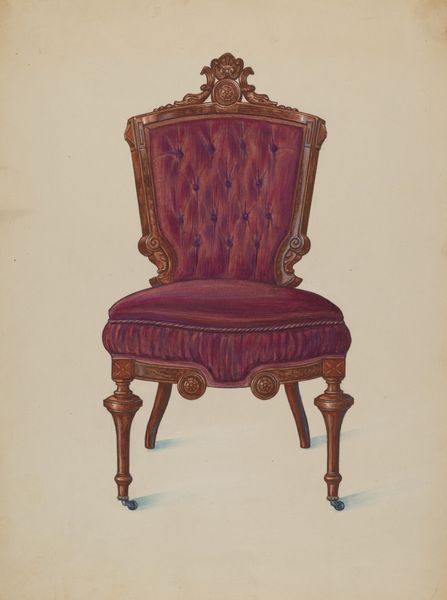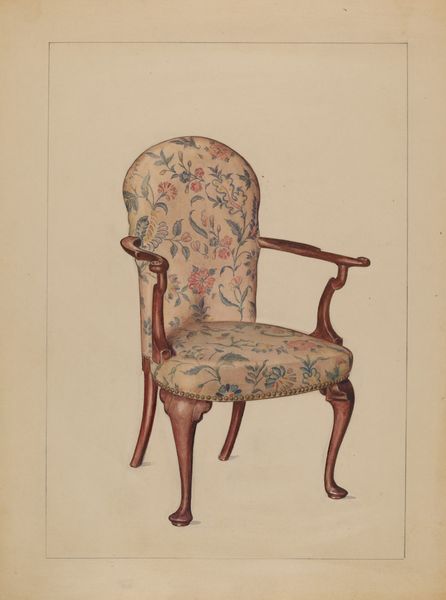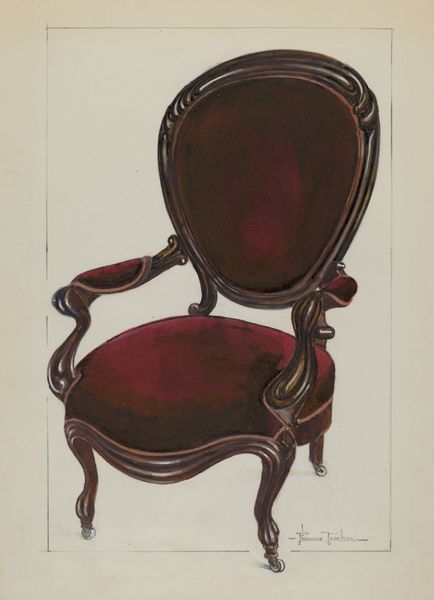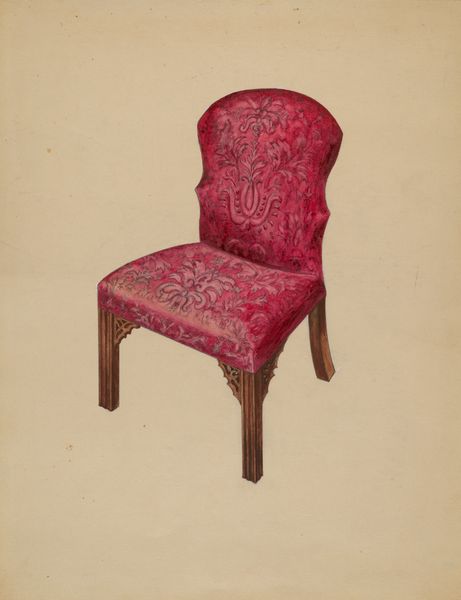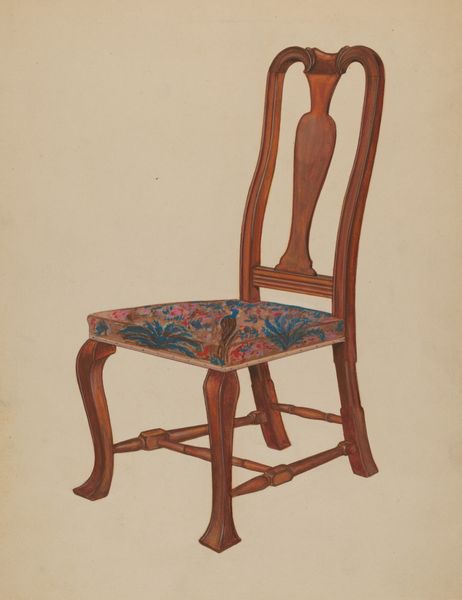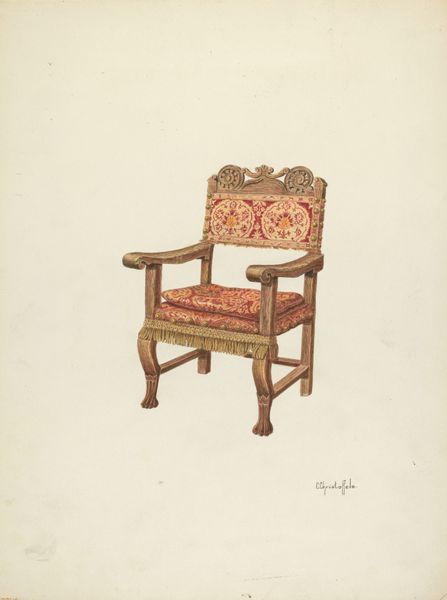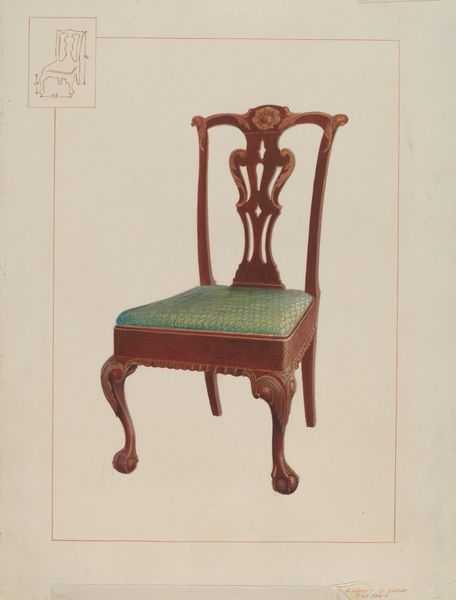
drawing, painting, watercolor, impasto
#
drawing
#
water colours
#
painting
#
watercolor
#
impasto
#
decorative-art
#
decorative art
#
watercolor
Dimensions: overall: 34.7 x 24.9 cm (13 11/16 x 9 13/16 in.) Original IAD Object: 39"high; 19"wide (seat)
Copyright: National Gallery of Art: CC0 1.0
Curator: Oh, this piece definitely makes a statement. A bit much, perhaps, but undeniably bold! Editor: I see a riot of florals contained within a meticulously drafted, watercolor rendering of an armchair—artist Florence Truelson depicts a "Victorian Upholstered Chair," likely made around 1937. The upholstery pattern is...busy, isn’t it? Curator: Busy is one word for it! It’s a far cry from minimalist, wouldn't you say? Look at the decorative touches—the floral fabric clashing cheerfully with the wood’s ornateness. It practically shouts its Victorian origins. You can feel the era of heavy embellishment. I wonder, did the artist intend any irony here, commenting perhaps on class and style? Editor: I wonder about accessibility too. To whose taste was it catering, who could actually afford furniture like this at the time? The chair embodies a level of comfort, class, and gendered ideas of domestic space. I am curious about the choice of watercolor as the medium here; what did it allow that oil painting or pastels may not have? What do you make of Truelson's decision to paint it? Curator: Excellent questions. Perhaps she captured these artifacts with the detached eye of the social commentator—documenting changing tastes and material culture. What makes you say so? Editor: It may sound too forward, but to my eyes it's as though the watercolor technique allows Truelson to "soften" and defuse some of the sharp historical, social edges of the furniture on display, perhaps even providing an opportunity to critique or reconsider past meanings and messages. The original setting becomes destabilized; this "Victorian Upholstered Chair" ceases being what it used to be. What do you think about it? Curator: That is quite interesting! Now I see more nuance to Truelson's perspective, it doesn't stop being beautiful by taking the "critique" position as well. By carefully selecting those social elements, she transforms the piece into a poignant social commentary, where one starts reflecting on changes of gender or class and past roles. Editor: Agreed. I think in exploring decorative art, the artist challenges us to find unexpected avenues for historical awareness. Curator: Well, my perspective has certainly been challenged, haven’t they? Thank you! Editor: Thanks to you. That’s the beauty of approaching artworks with historical sensitivity and a questioning attitude; even the most ordinary objects can tell powerful stories.
Comments
No comments
Be the first to comment and join the conversation on the ultimate creative platform.

